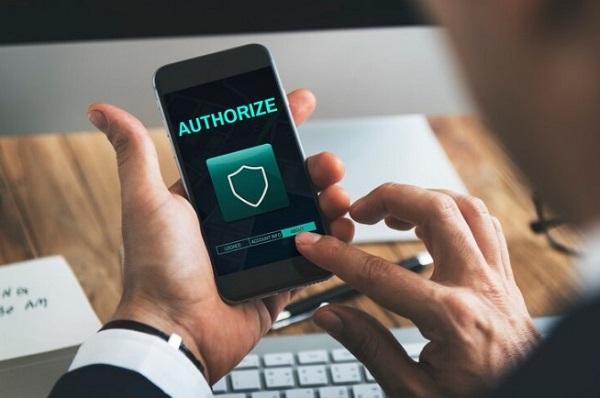Cybersecurity is a collective responsibility and boils down to this: the more systems we secure, the more secure we all are. With the internet being a primary platform for business transactions, there is a substantial amount of web traffic. Unfortunately, some individuals misuse the internet to spread viruses, hack bank accounts, and disrupt digital communities.
Cybersecurity in affiliate marketing means that you have thought about all potential threats and managed to prevent them. At least as far as it is generally possible in your conditions. Your task is to be able to manage risk for affiliates and it is completely within your power, do not look for excuses for yourself.
Importance of Cybersecurity
Nowadays, cybersecurity holds immense importance as hackers continue to evolve and conceal their identities when attacking others. Catching these hackers is a challenging task and sometimes seems impossible. The entire world relies heavily on technology, with people storing their data on computers and laptops and conducting various online transactions.
The leakage of information can have severe consequences for businesses. It can damage a company’s reputation by losing the trust of its partners. Additionally, the loss of crucial data, such as source documents or intellectual property, can result in the loss of a competitive edge.
Protecting affiliate networks requires an integrated approach: connection monitoring, protection against viruses, and various hacker attacks. It is clear from the normative that there is no universal or perfect solution in one bottle, but VPN, for example, VeePN is as close as possible to this. You can install it in Safari and other browsers, smartphones, PCs, TVs, and other devices. This can be taken as a basis and supplemented with other security measures.
Major Cyber Threats
#1 Ad Fraud
Companies may encounter ad fraud as a style of attack, where cybercriminals utilize bots and malicious software to gather information, deceive companies, or disrupt operations. Ad fraud can scam companies out of marketing tactics spending and hinder operational functionality. This can have a detrimental impact on any GTM strategy, wasting company resources including time and money.
The most common types of fraud faced by companies are:
- Ad Injections: Cybercriminals replace existing ads with their own by utilizing malicious software. These fraudulent ads might carry malicious software, disrupt company websites, or advertise without making any payments.
- Cookie Stuffing: This form of affiliate marketing fraud involves cybercriminals manipulating cookies to gain commission without driving genuine traffic to the company’s website.
- Click Spam: Similar to ‘Cookie Stuffing,’ click spam occurs when cybercriminals artificially generate clicks to receive a commission from a company.
#2 Consumer Data
Companies that neglect proper cybersecurity measures face risks that extend beyond mere data loss and disruptions to their GTM strategies. When customers fall victim to data breaches or scams through their website, trust in the company is eroded. Furthermore, by allowing cybercrimes to impact customers, businesses open themselves up to potential fines and legal action. The risks that companies should consider when developing a GTM strategy are as follows:
- Damage to Brand Reputation. Customers who experience fraud or data leaks are likely to lose trust in the company, which can have long-lasting effects on brand reputation and undermine future GTM strategies.
- GDPR fines. Many governments, such as the UK, impose fines on companies that fail to prevent data breaches and cyberattacks. Neglecting to protect customers can result in penalties of up to 4% of annual revenue or more.
Here it must be said that the user bears a significant part of the responsibility for his data. However, companies that collect them to one degree or another will also be guilty of kidnapping. You can offer your users and employees to use VPN.
#3 Bots
Many web developers rely on bots to enhance customer experiences, but there is a downside. Cybercriminals easily exploit this technology, using malicious bots to disrupt operations. They can create a network of bots to overwhelm security systems, leading to disruptions in websites, servers, payment systems, and more.
GTM strategies, which heavily rely on precision timing and increased operational capacity, are particularly susceptible to bot attacks. For example, during a product launch, businesses anticipate a significant increase in web traffic. However, bot attacks can cause websites to crash, payment systems to malfunction, and other technical difficulties. These issues can greatly diminish the effectiveness of a product launch, negatively impacting ROI and hindering business growth.
To counter these threats, companies must be well-informed about the various types of bot attacks:
- Form Bots: These bots are programmed to use stolen customer data to fill out forms and deceive or disrupt companies by providing useless or misleading information.
- Account Takeovers: These bots aim to gain unauthorized access or initiate fraudulent transactions by compromising a company’s bank and payment information.
- DDoS Attacks: These attacks involve using bots to overload websites, servers, and digital systems with fake traffic, causing them to crash and enabling hackers to access valuable information.
#4 Client Layer Attacks
Companies are at risk of client-side attacks, where hackers gain access to company systems and data through malicious content downloaded by the employees themselves. To defend against these attacks, it is crucial to educate employees on recognizing and avoiding malicious links, downloads, and harmful software that can initiate such attacks.
To protect your operations and GTM strategies, be aware of the following tactics employed by hackers:
- Web skimming: Hackers inject malicious code into a website, enabling them to gather user information and send it to their controlled server.
- Foam Jacking: Cybercriminals use malicious code to take control of a website’s form page, collecting sensitive information like login credentials and payment details.
- Cross-Site Scripting (XSS): Hackers inject malicious software into a company’s website, targeting customer information. These attacks occur on seemingly safe websites, catching customers off guard.
Best Practices and Cybersecurity Strategies for Affiliates
#1 Turn On MFA
Ensure that you activate multi-factor authentication (MFA) when accessing your network remotely or using remote devices. It is crucial to have MFA enabled when employees and volunteers work from home, use company-issued portable devices, or use their devices for work as per the “bring your device” (BYOD) policy. Keep in mind that the risk of hackers breaching through remote access portals is significant, so every employee or volunteer working remotely must undergo an MFA verification process to confirm their credentials.

#2 Create a Device Usage Policy
Create and enforce a policy for employees and volunteers regarding personal internet usage. Recognize that excessive online browsing not only decreases productivity but also increases the risk of cyber attacks. Consider implementing restrictions on internet access beyond what is required to fulfill work responsibilities.
#3 Have a Robust Password Security
Implement a policy that mandates employees and volunteers to establish and uphold strong passwords for all work devices and applications. Additionally, ensure that employees and volunteers promptly modify any initial dummy passwords provided upon employment (e.g., “1234”). To maintain password confidentiality, individuals must refrain from leaving notebooks or sticky notes containing passwords lying around. Furthermore, enforce regular password changes while ensuring that employees adhere to policy requirements by selecting robust passwords.
#4 Develop a Strategy for Dealing With Suspicious Links
Establish a clear policy regarding opening links from unfamiliar sources. Train employees and volunteers to refrain from clicking on any links in emails from third-party sources without verifying their legitimacy first. Instruct them to never disclose any credentials, such as usernames or passwords, if prompted by a link in such situations.
#5 Check If the Software is Up to Date
Ensure that all software is updated to prevent hacking. Verify that virus, malware, and ransomware protection software is up to date and guarding your system. Keep operating systems and business software solutions up to date on all devices. Enable automatic updates for security fixes and software patches, which safeguard against new vulnerabilities.
#6 Conduct Penetration Testing
You should consider allocating resources to conduct annual system penetration testing. It is recommended to hire a qualified third-party cyber security firm specializing in this area. Additionally, it would be beneficial to explore the services offered by forensic IT companies. They can test your affiliate network and email systems, identifying vulnerabilities and providing solutions to enhance cyber safety.
#7 Perform Backup Procedures Regularly
Ensure that your team thoroughly reviews its backup procedures. Frequently, businesses discover that their data has not been adequately backed up or that the backup is susceptible to loss or corruption in the event of theft or ransomware attacks.
#8 Educate Employees
Ensure that cyber safety education is a crucial component of your employee and volunteer training. Instead of simply inserting a few bullet points in a handbook distributed to new employees, actively train and regularly update employees and volunteers on cyber and data security issues. If possible, seek assistance from third-party seminars offering best practices in this area.
#9 Create a Cyber Security Policy
Craft a customized cyber policy to meet the specific needs of your affiliate. Ensure that the policy tackles the unique cyber risks your affiliate may encounter, outlining the necessary steps for your personnel to proactively prevent cyber-attacks, continuously monitor threats, and effectively respond to any cyber incidents.
#10 Develop an Internet Operations Management Policy
If your affiliate frequently processes financial transactions, it is crucial to exercise additional caution. Develop a distinct policy for wiring funds or sending money, which involves verifying instructions through a phone call using the registered number, particularly for transactions exceeding small amounts.
Conclusion
Cybersecurity in affiliate marketing requires a systematic approach, only in this case the company will be able to withstand competition and ensure a stable income. Incidents are almost inevitable, but if you know the potential threats and have a plan to deal with them, you can emerge victorious from the situation. A significant part of the threats will be prevented, while the other part will reduce their harmful effects.




